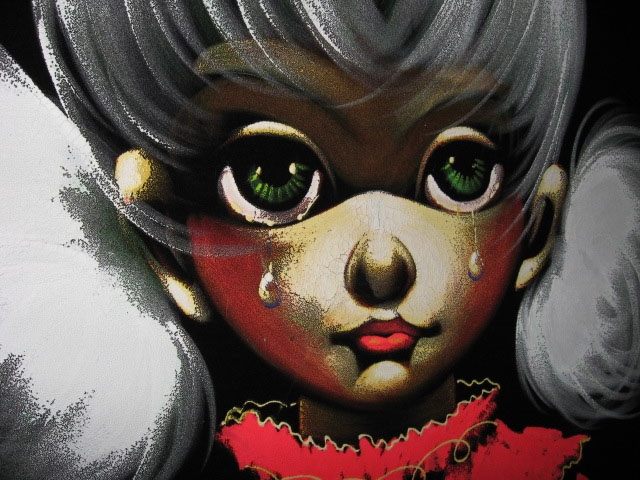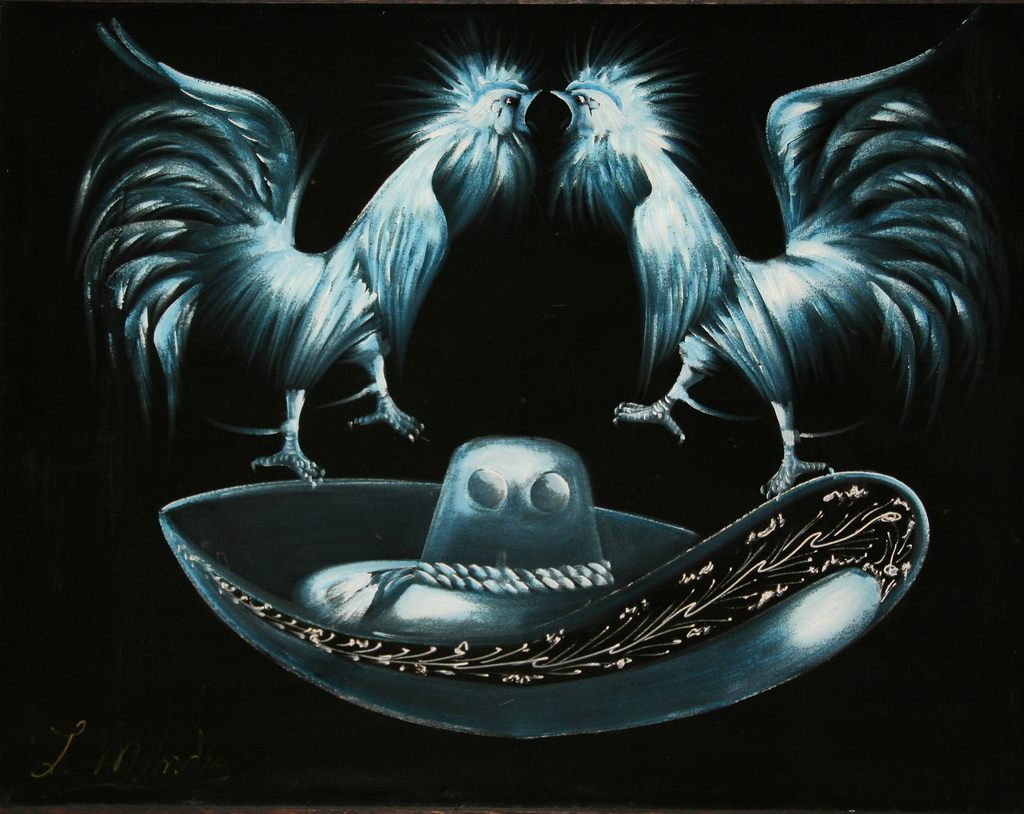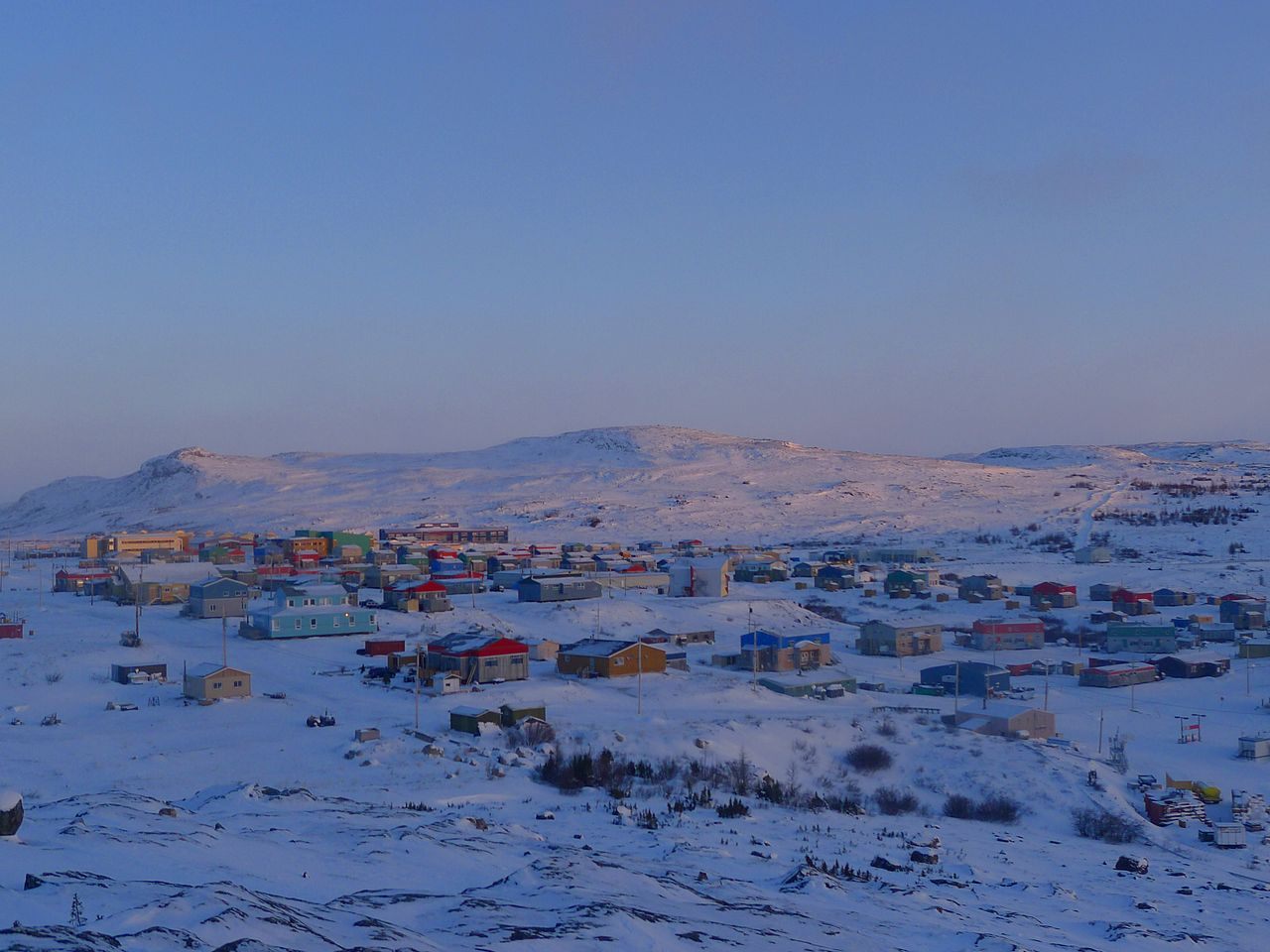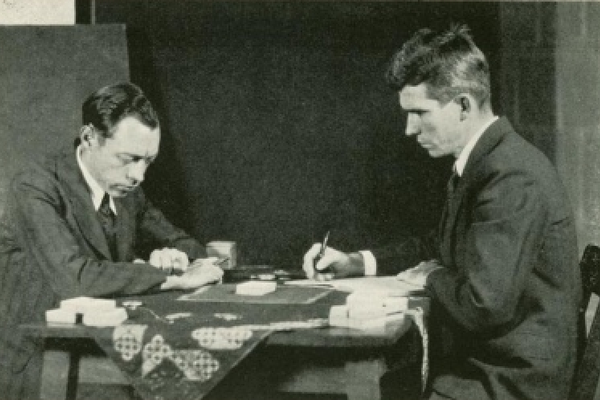The Inuit Love Affair with Black Velvet Painting
In the 1970s, a group of Palestinian salesmen set out to dominate the Canadian velvet market.

Black velvet requires darkness. In sunlight, it fades.
The dark of Northern Canada is unlike any other dark in the world. The deep darkness—“noon-moon” as it’s called—lasts for months, yet the black skies often dance with the psychedelic projections of the Aurora Borealis, a natural laser light show of green and pink and purple and blue that is a result of electrically charged sun particles caught in the magnetic grasp of the North Pole.
In the late 1970s and early ‘80s, an unlikely trend took root in these frostbitten tundras. Black velvet painting—those kitschy relics of a bygone age; a staple of tiki dives, bad motels, and pot-tinged dorm rooms—became popular in the area’s remote Inuit communities, particularly in the Yukon and Nunavut territories. The story of how these paintings arrived in these Arctic communities was even more unlikely, one by way of Palestine, and the Tex-Mex border.
In the 1960s, a successful grocery store owner by the name of Doyle Harden discovered velvets, and later began to mass produce them. He built a massive black velvet factory named Chico Arts right on the border of El Paso and Ciudad Juárez that, at its height, was capable of pumping out around 10,000 Velvet Elvis’, nude pinup girls, and Dogs Playing Poker every single day. Harden was a shrewd and practical businessman—a man who once cited “compound interest” as the eighth wonder of the world. In less than a decade, he emerged as a kind of Willy Wonka-esque figure.

Thanks to Harden, Juárez in the ‘70s was to velvet painting as Montmartre was to Impressionism, or the San Fernando Valley was to the Golden Age of Porn. To some, it was a new kind of Gold Rush—or, perhaps, more accurately, a Velvet Rush.
Meanwhile, about 2,000 miles north, in a Canadian province whose namesake—princess Louise Caroline Alberta—was herself renowned for painting, a group of Palestinian salesmen set out to “develop and dominate the Canadian velvet market.” Icy Canada may have seemed an improbable destination for entrepreneurs from the Middle East, yet due to a welcoming stance on immigration and its jobs and connections to the Mid-East Oil Company (Alberta being the heart of the Canadian oil industry), the country experienced a small uptick of Arab immigrants in the years directly following the Six-Day War, particularly in Edmonton where to this day exists a vibrant Palestinian community.
The Palestinians were determined salesmen. According to Harden—who accompanied a number of the expeditions—the salesmen would strap velvets onto their backs and sell them door-to-door. When that proved successful, writes Sam Quinones in his indispensable book Antonio’s Gun and Delfino’s Dream, they expanded. They bought a van and drove from town to town across the provinces selling the paintings whenever, wherever they could. After that, they took to the skies. They had a new, untapped market: the Inuit.

To maximize profits, the salesmen tied as many paintings as they could to their planes. The planes then, covered in enough velvet to costume a lifetime of sad lounge singers, would take off from Edmonton’s City Centre Airport and fly from village to village trying to find Inuit communities to sell their paintings. As Harden recalls:
“You’d get to a large lake. On the shores would be a village. The plane would circle. They’d land it on the water…the people come to you. The dogs come out barking, and the kids come out to see who you are.”
The trips were a success. The Palestinians were often able to sell hundreds of paintings in a single visit. The Inuit were eager to pay top-dollar for these lovable, tacky odes to offbeat Americana. On the flip side, Inuit portraiture began to find its way into black velvet’s ever-broadening catalog, and faint traces of its influence could be found in Inuit art, such as the work of Alaskan born Robert Mayokok. Or, perhaps, Arctic Elvis.

The Palestinians’ arrival came at a pivotal inflection point in modern Inuit history. Many Inuit villages were changing quickly. The traditional—some of which had been largely unchanged for thousands of years—was being replaced with the new. Residents of Povungnituk, for example, in the Nunavik region of the Nord-du-Québec, were trading in their igloos and dogsleds for prefab homes and snowmobiles.
The populist, throw-away appeal of velvet cannot be understated. This wasn’t a medium that was meant to last. Velvets were cheap thrills, to be taken in like a cigarette, and then forgotten. Paintings that “belong in a gin mill, not a museum,” once quipped Edgar Leeteg, widely considered to be the father of American velvet painting, a gonzo ex-cowboy who sold his first velvet for a sandwich, and whose sleazy exploits in booze, bikes, and brawls would have given the members of Mötley Crüe a run for their money.
It’s no coincidence that multicultural melting pots, border towns, and immigrant communities were at the center of black velvet’s cultural and commercial proliferation—bought and sold by the politically, culturally, and socially dispossessed. The savvy Palestinians invested their earnings, and moved on to larger ventures.

The art form’s most permanent legacy might be in the courtroom cases it inspired. The signature Velvet Elvis painting, known as “Velvis”, initiated a copyright war that Harden fought and lost, and later, according to the Dallas Observer, Elvis’ Estate filed over 50 lawsuits to try and rid the country of every last one. Chico Arts pivoted further into truck stop ephemera—cheap Native American themed knickknacks that many of its staff found offensive; they later took legal action against Harden for cultural misrepresentation. Eventually, Harden sold Chico off. Black velvet production slowed worldwide. Soon after, it mostly disappeared.
If any velvets remain from the Palestinians’ trips they’re likely scattered, hidden in junk shops, or tucked away in someone’s garage—sold, as always, to make a quick, cheap buck. “Bought for $3 and sold for $25,” said one vendor, selling velvet paintings of Inuit girls online. Did these paintings have a connection to those sales trips? Had these girls once seen velvet planes appear in the sky above their villages? We’ll likely never know.
The vendor went on to say he’d bought them from a collector, but he didn’t know exactly where they were from. All she’d said was that she found them in Canada. “That distinction,” he said, “may make a difference.”























Follow us on Twitter to get the latest on the world's hidden wonders.
Like us on Facebook to get the latest on the world's hidden wonders.
Follow us on Twitter Like us on Facebook